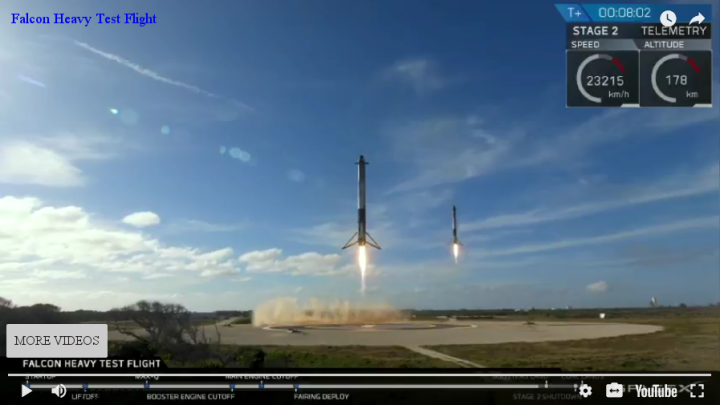Europe suddenly realizes that reusable rockets are possible and economical
The head of the European Space Agency (ESA) has admitted in his blog that the agency’s future rockets, Ariane 6 and Vega C, are not going to be competitive because they will not be reusable.
The promise to secure autonomous access to space and reduce the price by a factor of 2 proved sufficiently compelling to secure ESA member states’ agreement to finance the development. At that time, I succeeded in placing environmental concerns and the possible development of reusability among the high-level requirements:
- Maintain and ensure European launcher competence with a long-term perspective, including possibility of reusability/fly-back.
- Ensure possibility to deorbit upper stage directly
Due to time and cost pressure, however, these aspects did not make it onto the agenda for Ariane 6 and Vega C. Yet in the meantime, the world has moved on and today’s situation requires that we re-assess the situation and identify the possible consequences. In many discussions on the political level, the strategic goal of securing European autonomous access to space has not changed, however there is a growing sense that pressure from global competition is something that needs to be addressed. With Vega C, Ariane 62 and Ariane 64 approaching completion, it seems logical to complete these launchers in order to at least take that major step towards competitiveness. At the same time, it is essential that we now discuss future solutions, including disruptive ideas. Simply following the kind of approaches seen so far would be expensive and ultimately will fail to convince. Totally new ideas are needed and Europe must now prove it still possesses that traditional strength to surpass itself and break out beyond existing borders. In this sense, the process of discussing and deciding on a launcher system that eschews traditional solutions can send a powerful signal out into other areas as well. I therefore intend to invite innovative, really interested European players to come together to define possible ways forward. [emphasis mine]
Let me translate his bureaucratic wording: “We didn’t think reuseable rockets were practical, economical, or even possible. We took a safe route in designing Ariane 6 and Vega C. We screwed up, and now face a competitive market in which our rockets cannot compete. Thus, we need to move fast to copy the private sector, SpaceX and Blue Origin in particular, or face serious financial consequences.
Unless he forces some major cultural changes in ESA, however, I expect that by the time this government-run operation manages to duplicate the achievements of those two private companies, those companies will have marched on to even more innovative successes.
The head of the European Space Agency (ESA) has admitted in his blog that the agency’s future rockets, Ariane 6 and Vega C, are not going to be competitive because they will not be reusable.
The promise to secure autonomous access to space and reduce the price by a factor of 2 proved sufficiently compelling to secure ESA member states’ agreement to finance the development. At that time, I succeeded in placing environmental concerns and the possible development of reusability among the high-level requirements:
- Maintain and ensure European launcher competence with a long-term perspective, including possibility of reusability/fly-back.
- Ensure possibility to deorbit upper stage directly
Due to time and cost pressure, however, these aspects did not make it onto the agenda for Ariane 6 and Vega C. Yet in the meantime, the world has moved on and today’s situation requires that we re-assess the situation and identify the possible consequences. In many discussions on the political level, the strategic goal of securing European autonomous access to space has not changed, however there is a growing sense that pressure from global competition is something that needs to be addressed. With Vega C, Ariane 62 and Ariane 64 approaching completion, it seems logical to complete these launchers in order to at least take that major step towards competitiveness. At the same time, it is essential that we now discuss future solutions, including disruptive ideas. Simply following the kind of approaches seen so far would be expensive and ultimately will fail to convince. Totally new ideas are needed and Europe must now prove it still possesses that traditional strength to surpass itself and break out beyond existing borders. In this sense, the process of discussing and deciding on a launcher system that eschews traditional solutions can send a powerful signal out into other areas as well. I therefore intend to invite innovative, really interested European players to come together to define possible ways forward. [emphasis mine]
Let me translate his bureaucratic wording: “We didn’t think reuseable rockets were practical, economical, or even possible. We took a safe route in designing Ariane 6 and Vega C. We screwed up, and now face a competitive market in which our rockets cannot compete. Thus, we need to move fast to copy the private sector, SpaceX and Blue Origin in particular, or face serious financial consequences.
Unless he forces some major cultural changes in ESA, however, I expect that by the time this government-run operation manages to duplicate the achievements of those two private companies, those companies will have marched on to even more innovative successes.


